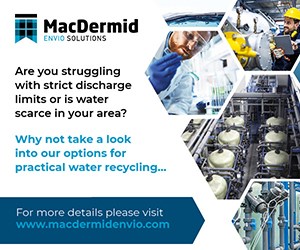Reverse Current Cleaning
Question: I am the electroplating manager at a company that makes connectors.
Question:
I am the electroplating manager at a company that makes connectors. All of our parts are made from raw metal stock (copper, nickel-copper, etc.) on screw machines. The problem we have is we must clean the parts before plating them (remove the cutting oils and grease). We have used chemical cleaners, anodic cleaning and reverse current cleaning. What I am looking for is as much information on reverse current cleaning. This process seems to work the best. In the current process, we are using 2-5 min at no more than 4V. Can you shed anymore light on this subject? Any information would be appreciated. Also, are there any web sites that would be beneficial to look at on this subject? Thanks. S.F.
Answer:
I am not aware of any web sites that dedicate much space to electrocleaning. Periodic reverse cleaning is often the most effective method of electrocleaning since you get the benefits of both anodic and cathodic electrocleaning. The disadvantage to the anodic electrocleaning may be that you will have a tendency to oxidize your copper parts since oxygen is the gas generated at the workpiece. The disadvantage to the cathodic process is that you will tend to plate out bath contaminants onto the workpiece. The primary advantage of the cathodic process is the fact that you generate twice as many hydrogen bubbles at the workpiece with the same amount of power. The periodic reversal of current is beneficial since it minimizes the disadvantages of either process.
It sounds like you are operating in the correct voltage range. Current densities recommended for copper and copper alloys are in the range of 10-50 amps/sq ft at an elevated temperature (about 150-160F). When performing reverse electrocleaning, it is generally recommended to finish with an anodic step in order to dissolve any bath contaminants that may have plated onto the part.
Related Content
-
Filter Press Troubleshooting and Optimization
Zachary Beckman of Haviland Enterprises Inc. discusses proper filter press maintenance for optimization of wastewater treatment systems.
-
Hubbard-Hall Acquires BioConversion Technology
The acquisition adds experience and biologics to the AquaPure product line.
-
Zinc Phosphate: Questions and Answers
Our experts share specific questions about zinc phosphate and pretreatment
















